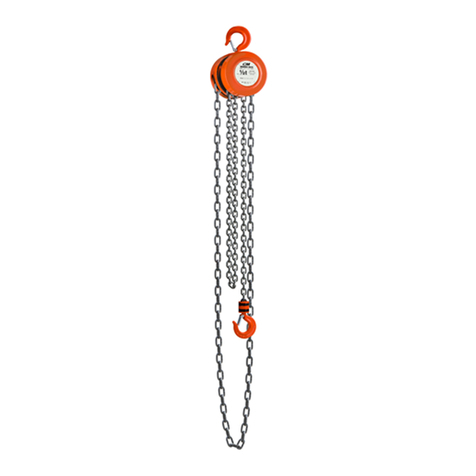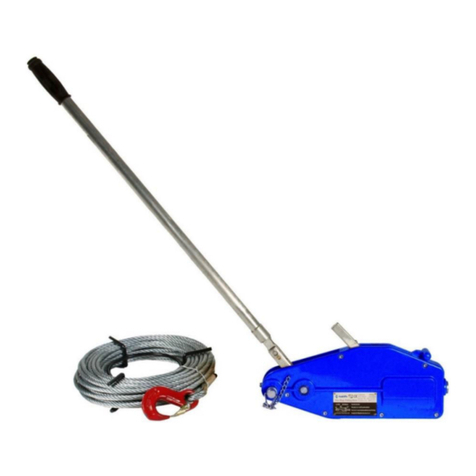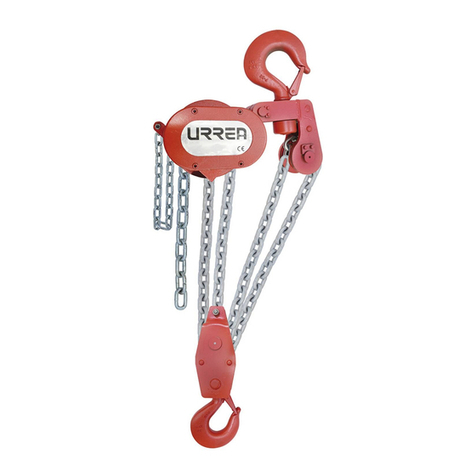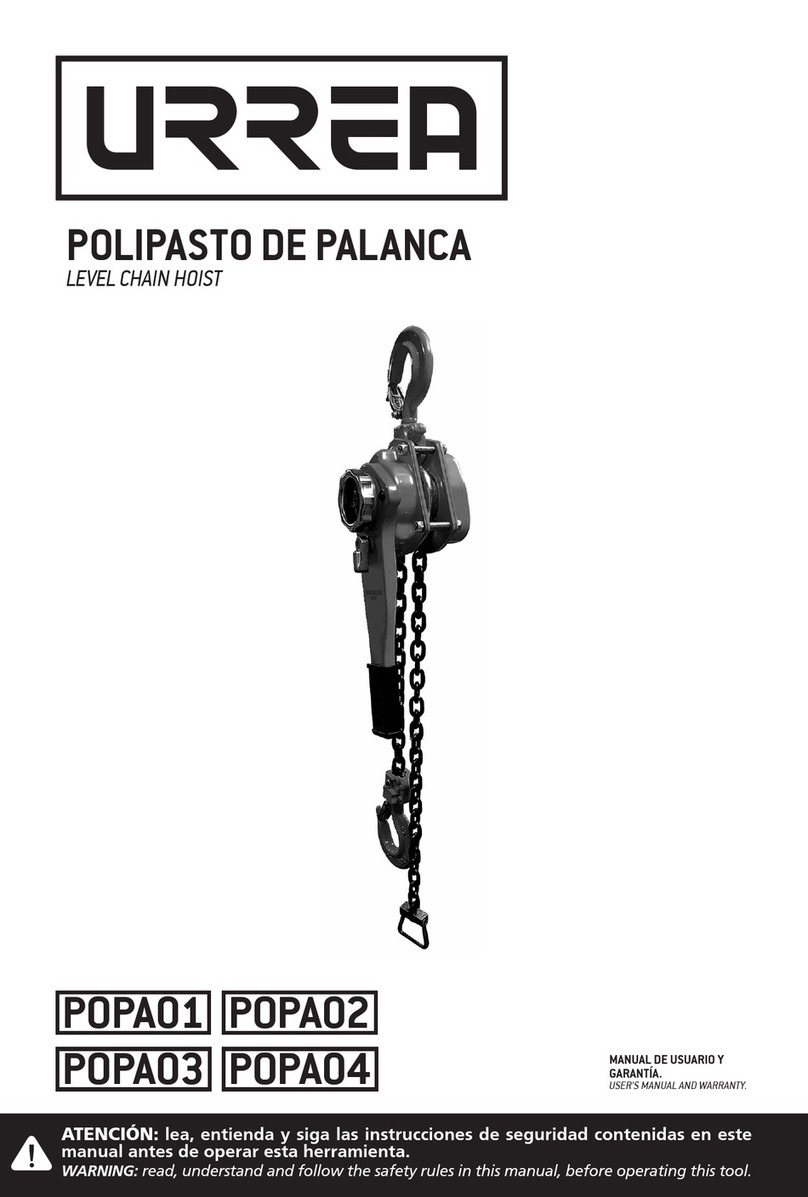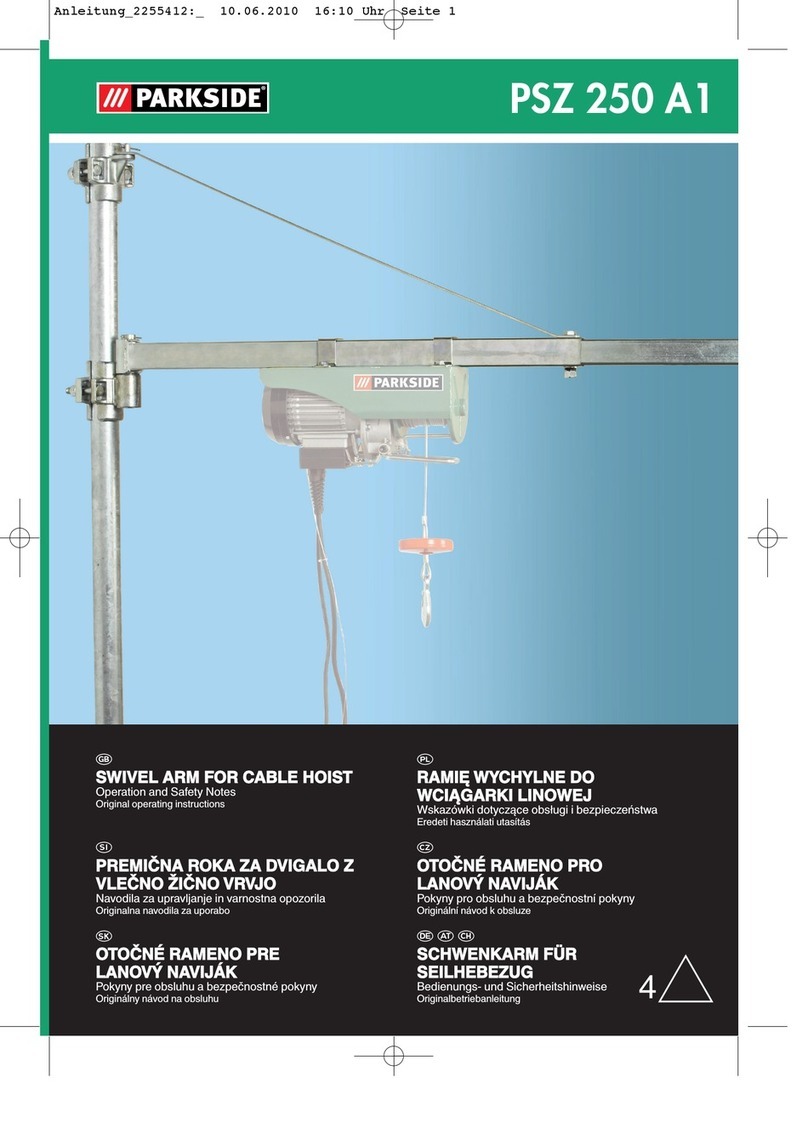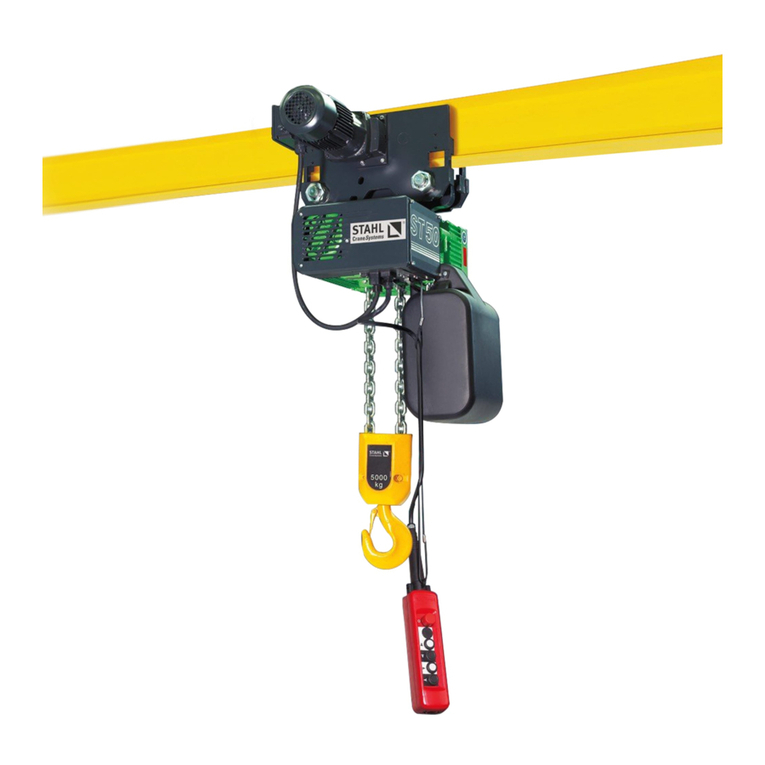
4-El bulón de sujeción de la cadena, debe ser de
acero de grado 8, correspondiente a todas las
capacidades, difiriendo de acuerdo a cada capa-
cidad la medida del bulón.
Con respecto a los modelos que tengan doble
tiro de cadena, deben asegurarse de que en la
reducción estén presentes los tres bulones de
sujeción, que cuenten con arandelas de seguri-
dad, y de que el bulón no se encuentre doblado
o que haya sido reemplazado por otro que no
corresponda con las características de seguridad
establecidas.
5-Controlar la lubricación y el ajuste de la crapo-
dina. Verificar posibles desgastes.
Desarmar y engrasar cuando corresponda.
Mantener siempre el movimiento del gancho.
6-Para la capacidad de 1, realizar la revisión de
los rodamientos de soporte de la polea.
Verificar el ajuste de los bulones de las placas
laterales.
Verifique que la cadena no se encuentre cruza-
da cuando ingresa a la reducción.
Verifique que la polea de la reducción no esté
rota o presente desgaste y que sea la adecuada
de acuerdo a la medida de cadena.
VERIFICACIÓN DE ESTADO DE LA CADENA
La cadena debe mantenerse limpia y lubricada.
Revise visualmente la cadena cada vez que usa
el polipasto.
El polipasto no debe operarse cuando la cadena
esté retorcida o enredada.
Una fase importante del mantenimiento del po-
lipasto es la inspección de la cadena. Revise cada
eslabón individualmente para determinar si hay
alargamiento de la cadena.
IMPORTANTE: Las dimensiones de la cadena
utilizada en el polipasto son normalizadas y la
polea de centro fue adaptada a dichas medidas.
No trate de cambiarla por cadena de otro fabri-
cante.
1-Revise la cadena para ver si hay desgaste gene-
ral o alargamiento. Para esto, realice lo siguien-
te: elija un tramo sin desgaste ni alargamiento
(por ejemplo en el extremo suelto), deje que la
cadena cuelgue verticalmente con una carga li-
gera (unos 10 kg) para que quede tirante. Mida
la longitud exterior de un número conveniente
de eslabones (unos 30 cm). Haga lo mismo con
un número de eslabones de una sección usada
de cadena y calcule el porcentaje de aumento
en la longitud de la cadena usada.
2-Si la longitud de la cadena que se encuentra
en uso, supera el 1 1/2 % en comparación con el
tramo de cadena que está sometida a menos uso
(tomando como referencia la cadena que se en-
cuentra en el extremo opuesto al gancho) lo que
representa 4,5 mm de 30 cm entonces la cadena
debe reemplazarse.
Si la cadena se ha gastado, pero su valor no su-
pera el 1 1/2 %, revísela en otros tramos a lo
largo de su extensión y realice un control más
detallado teniendo en cuenta de que el proble-
ma se pudiera agravar.
IMPORTANTE: En el momento de necesitar un
tramo de cadena más largo, se debe realizar el
cambio completo de la cadena (sumándole los
metros adicionales), dado que el fabricante, no
admite soldaduras ni empalmes.
VERIFICACIÓN DE CIRCUITO ELÉCTRICO
Todos los polipastos eléctricos se entregan listos
para comenzar a operar.
El usuario solo tiene que realizar la conexión a la
línea de alimentación, de acuerdo a las especifi-
caciones establecidas por el fabricante y colocar
las protecciones adecuadas como Disyuntor di-
ferencial, Interruptor termo magnético y guarda
motor, los cuáles quedan a criterio y responsabi-
lidad del usuario.
La instalación, revisión o reparación del circui-
to eléctrico o de algún componente del mismo,
debe estar a cargo de personal calificado.
Respetar las características de los elementos co-
locados en el sistema eléctrico del polipasto, en
el caso que debiera reemplazar alguno.
No se debe realizar ninguna tarea de manteni-
miento o inspección, sin antes haber interrum-
pido el suministro
de energía del tablero de acometida de alimen-
tación del polipasto.
7
ESPAÑOL•Manual de usuario







